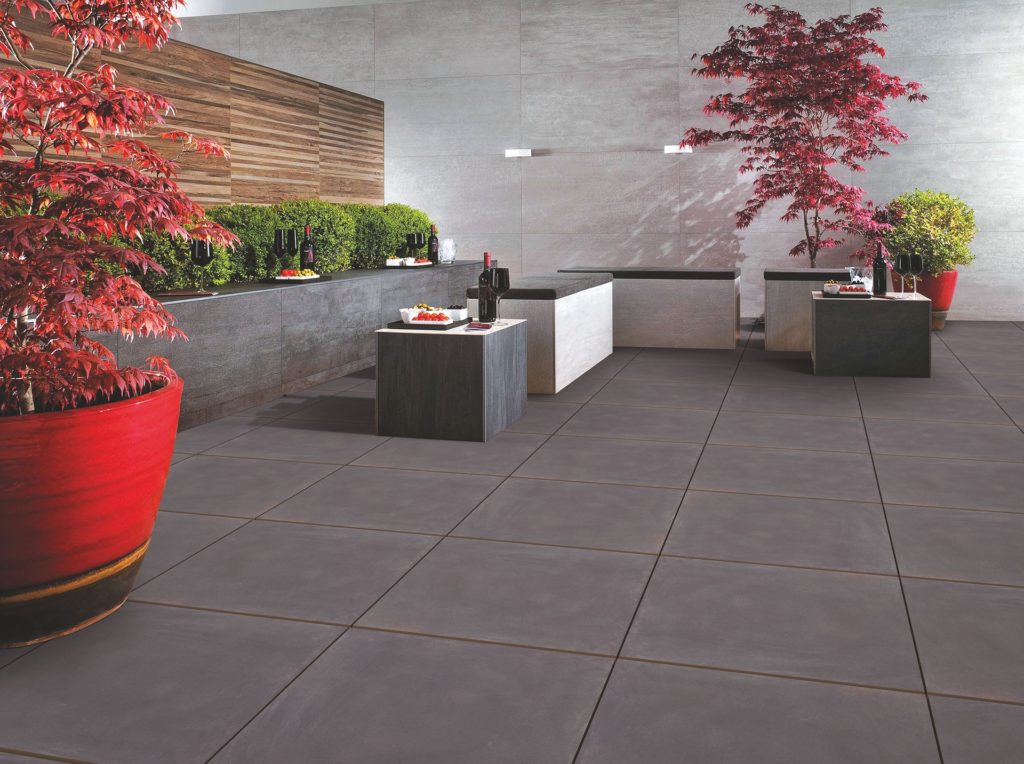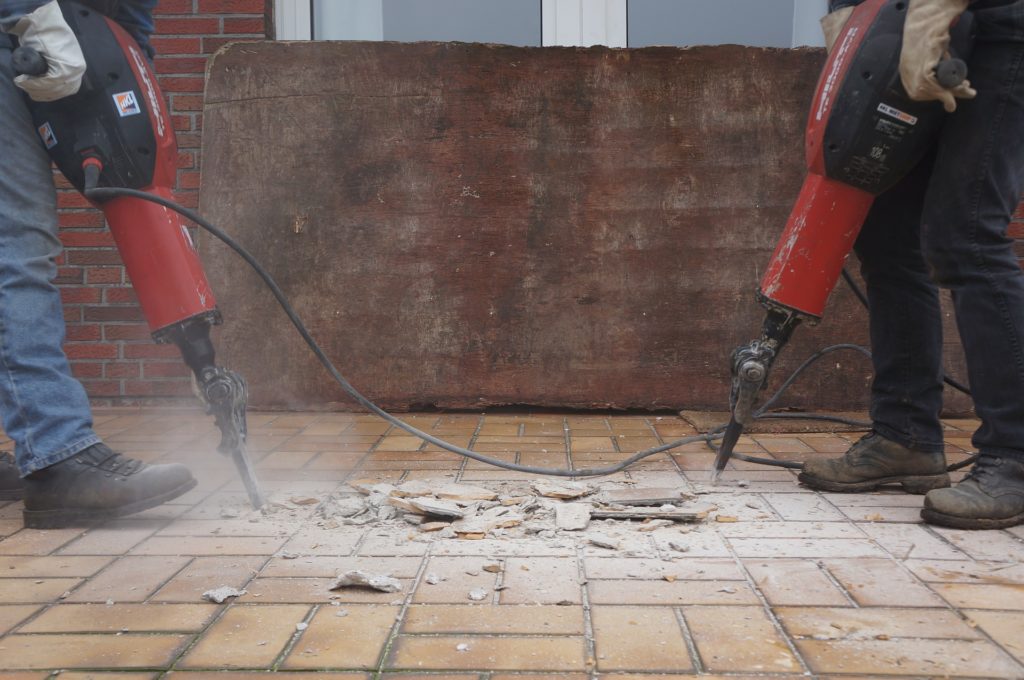
When thinking about home improvement, especially flooring upgrades, the biggest consideration is always the expenses. And there are many factors that determine the price of your project.
One of the flooring options that‘s trending this year is porcelain tile.
How Much is a Porcelain Tile Floor?
To determine the total cost of having a porcelain tile floor, we’re going to talk about all factors that will affect the final flooring costs.
Most of the costs will be flooring installation, but we will break it down a bit for you to see what makes that total price per square foot.
Installation Costs
In our zip code –which is 33442– the average prices of a porcelain tile floor range from $6 to $12 per square foot depending on these parameters.
Tile Design
To give you an idea, the average price of just the tiles alone ranges from $3 to $4 per square foot. However, there are a number of factors that can affect the price of porcelain tiles such as the manufacturer, the country of origin, the depth/quality of the printing process, etc.
But the thing that affects tile pricing the most is the design. We can further break this down into 3 parts.
Style
Tile visuals have come a long way and manufacturers definitely have enhanced their technology to make realistic wood, cement, or even natural stone looking tiles.
With just the porcelain tile options alone, you can do 10,000 square feet of tile with each tile having a unique pattern!
The complexity of the tile design can affect the price but not that much. Maybe a couple of dollars. What this means is you can have the freedom to choose whatever design you want!
Here’s a gorgeous marble looking tile from the Tile Empire.

However, size and shape do affect the pricing in a significant way, especially for tile floor installation.
Shape
Exotic shaped tiles are trending this year with clients picking shapes such as hexagonal and chevron tile patterns. This can affect installation costs as different shapes can require more materials for the tiles to adhere to the floor properly.
Another thing to consider for shape is if you are going to orient the tiles diagonally on. The installation costs will be the same, but you have to order more tiles, –about 10% to 15%– more to account for the waste.
The tile installers will have to do more cuts to adjust to the diagonal installation so that is something to keep in mind.
Here’s another unconventional shape, scales, from International Wholesale Tile!

Size
It’s expected that the larger the tile size, the higher the price. Larger tiles cost more and require more materials to install.
However, if you go the other way and move to smaller tile patterns, such as mosaics, the price can also rise considerably.
The price of tiles will not change much, but the installation costs will increase because it requires more work for it to be installed according to the design, which will make the labor costs higher.
This is most especially true when dealing with bathrooms.
Here is a beautiful example of mosaic tiles in a bathroom from Happy Floors:

Room
For spaces such as living rooms, patios, bedrooms or kitchens, they have almost the same cost to install, given that they have the same square footage. However, bathrooms have different project costs than any other space.
The workers have a limited space to work in and the cuts are more precise and more frequent, requiring more work.
Also, when dealing with bathrooms, we typically do it on a cost per hour basis, instead of the usual project costs.
We determine how much time is going to be spent on labor, then we can figure out the cost for the client.
Material
Thinset
This is the most common way to install porcelain tiles. As the name implies it uses a thin material to bond the tile to a subfloor. This lets you achieve a lower floor height, about a quarter to half an inch from the original flooring.
Thinset is also the installation that’s commonly used for smaller tiles.
Mudset
For larger tiles, a mudset installation is required to hold the tiles properly. This is a lot more material than thinset. It can raise the floor from an inch to an inch and a half because of the mortar mix and the tile adhesive, which is the thinset material.
Demolition Cost

As much as possible, we prefer to demolish the existing floor first to ensure the steadiness of the tile application.
Carpet, vinyl, and laminate flooring are all fairly easy to remove so they can just cost $0.50 to $1 per square foot.
However, for existing tile floors, marble or a glued-out wood floor, the labor cost can be $2 to $3 per square foot.
Time
This cost is just conditional as it depends on your budget and when you want the installation to be finished. This is also related to demolition costs.
Let’s say that you have 2 to 3 persons working on the installation without a professional demo crew, the time to finish a standard home measuring 2500 square feet can take up to 2 weeks.
However, if you can afford to have a demolition crew, it can take only 5 to 7 business days to finish.
It highly depends on your budget. The more people you have, the faster the project will be.
Is a Porcelain Tile Floor a Good Investment?
Value is highly dependent on your budget and situation. Upon first glance, you might say that tiles, especially porcelain and ceramic tile, can lean on the more expensive side. Sometimes, it can even reach the prices of a hardwood floor installation.
But here in South Florida, porcelain tile is one of the top 3 best-selling flooring materials. Many clients definitely see its value and it has one of the most value for the money when it comes to flooring solutions.
Climate
South Florida is very hot and humid but it can also be very wet. Flooring options tend to lean on the more waterproof options which are coincidentally the top 2 best-sellers on Foundation Flooring: Luxury Vinyl and Porcelain Tile.
Porcelain tiles are very waterproof so it is perfect for our climate and it can be used in wet spaces such as the bathrooms, kitchens, or laundry rooms.
Price
Aside from being waterproof, porcelain tiles lie on the sweet spot between expensive hardwood and very affordable luxury vinyl. That price doesn’t just go to aesthetics, it goes to durability and wearability.
Durability
Between our 2 best-sellers, porcelain tile is arguably more durable. It is a very strong material. It can withstand high impact stresses which can make it suitable for high-traffic areas and it can be used in commercial spaces.
And it can also bear a heavy weight so if you have large furniture in your living room or in your kitchen, porcelain tile is the best option you have.
Porcelain tile is also highly scratch-resistant making it the best flooring solution if you have kids or pets.

Long-Term Value
One of the greatest benefits of having a porcelain tile floor is the little to no maintenance that comes along with these floors.
Hardwood floors can require sanding and refinishing after some time and natural stones need to be sealed and refinished every 2 years. However, with porcelain tile, you don’t have to do any of that to keep it looking good.
Porcelain tile floors are almost a set it and forget situation, because of their durability and reliability. With wood floors, you have to consider flooding, public adjusters, insurance claims and all those shenanigans. But with porcelain tile, you don’t have to think about all that. You can just rest easy in your place, as you should be.
This is the perfect solution for people with a very busy lifestyle, have kids or pets, or just need a worry-free flooring solution for their home or workplace.
What’s even better is porcelain floor upgrades also increase your resale value!
But even if you don’t plan to resell your house, it’s still a pretty good investment as it can last for 20 – 50 years, depending on the installation. But here at Foundation Flooring, we believe that if you lay your floor right the first time, you can walk all over it for a lifetime!
In conclusion, we highly recommend porcelain tile flooring for your new space or if you’re thinking about your next upgrades for your space, especially here in South Florida.